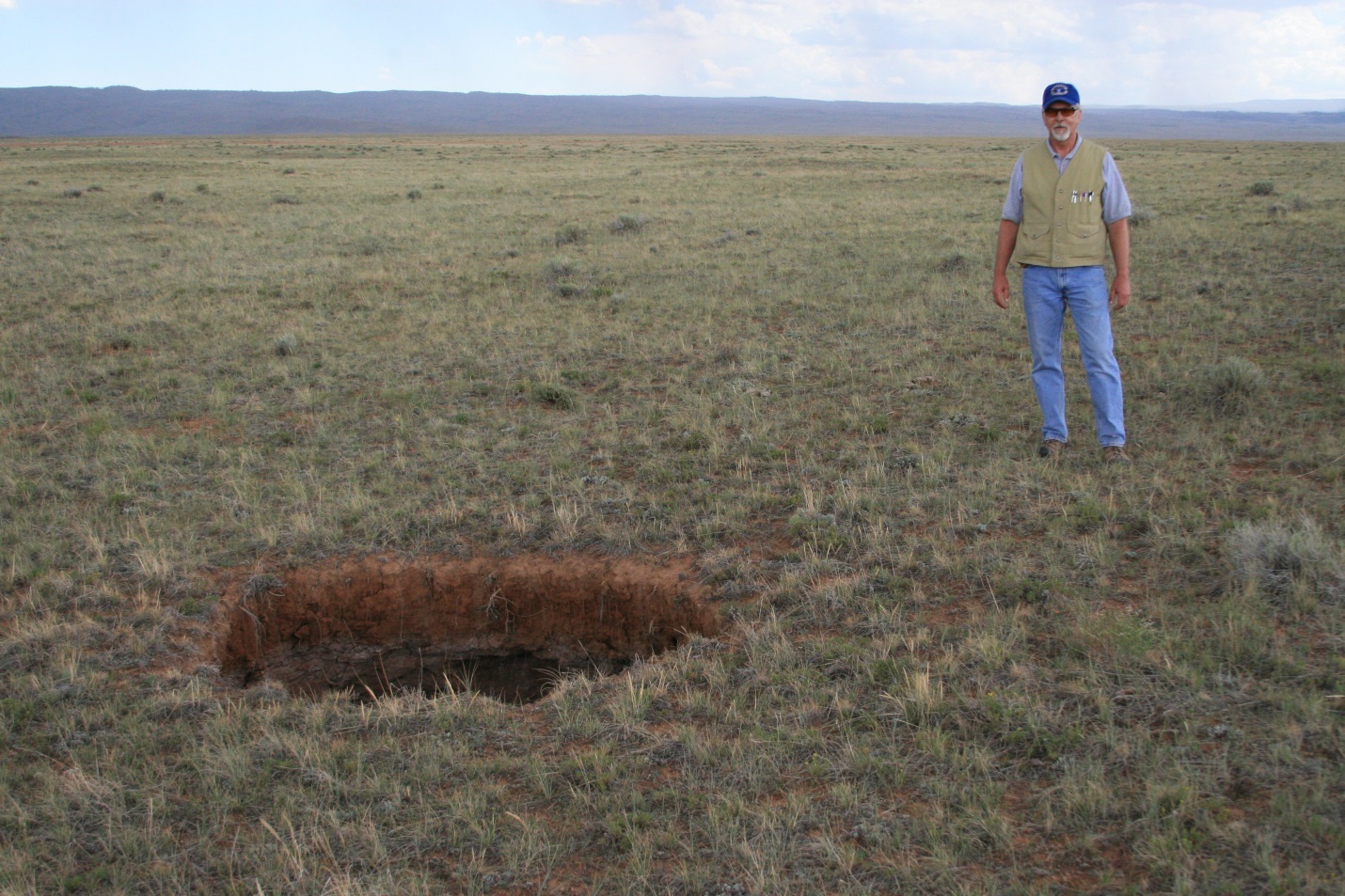NEWS RELEASE: Wyoming Geological Survey
Wyoming State Geological Survey sent this bulletin at 04/11/2016 03:52 PM MDT |
|
Having trouble viewing this email? View it as a Web page. |
DATE April 11, 2016
******FOR IMMEDIATE RELEASE******
WSGS Publishes Report on Sinkholes and Other Karst Features in the Southern Laramie Basin
The Wyoming State Geological Survey (WSGS) recently published a report on the occurrence of sinkholes and other evaporite related karst features in the southern Laramie Basin, including in and around the city of Laramie. Flowing groundwater can, under certain conditions, dissolve evaporite geologic deposits such as gypsum and anhydrite leading to the formation of underground cavities, sinkholes and gypsite deposits. As in other parts of the world, once formed these features can have an impact on buildings, roads and other infrastructure.
“One of the important missions of the Wyoming State Geological Survey is to identify, study and characterize geologic hazards that may impact the public and infrastructure. This study was performed in order to do just that”, says Tom Drean, Director of the Wyoming State Geological Survey.
While completing geologic maps with funding from the U.S. Geological Survey (USGS), WSGS geologists recognized the presence of sinkholes and other evaporite karst features in the southern Laramie Basin. These karst features included gypsite deposits, underground cavities and sinkholes. A review of early aerial photography in the vicinity of Laramie showed the occurrence of sinkholes in some areas where residential developments now exist. The recognition of existing karstic terrains and the realization that other areas within the basin have similar geologic conditions that favor sinkhole development indicated a need for a study describing and characterizing the identified karst features in the southern Laramie Basin.
“The results of this study show that evaporite karst features have formed in specific areas of the southern Laramie Basin where the gypsum-rich Satanka and Chugwater formations occur in the shallow subsurface and have come into contact with flowing ground or surface water.” says Alan Ver Ploeg, WSGS lead author. “Evaporite karst features have been part of the Laramie landscape for many years,” he says, “LaBonte Lake and the gypsite deposits west of LaPrele Park are two notable examples. In fact, gypsum deposits were quarried near LaPrele and LaBonte parks as late as the 1940s.”
For this report, WSGS geologists conducted field surveys, examined geophysical well logs and reviewed historical records of gypsum karst occurrences in the southeastern Laramie Basin. The 33-page report, “Characterization of Evaporite Karst Features in the Southern Laramie Basin, Wyoming: Report of Investigations No. 70,” is available as a free download on the WSGS website: http://sales.wsgs.wyo.gov/characterization-of-evaporite-karst-features-in-the-southern-laramie-basin-wyoming/
The online report includes color photos and geologic maps of evaporite karst feature locations throughout the southern Laramie Basin.

Open sinkhole in the Lone Tree Creek sinkhole complex taken on the date of discovery, July 20, 2012. Photo by field assistant Davin Bagdonas, 2012.
Media Contact:
WSGS
(307) 766-2286
wsgs-info@wyo.gov

